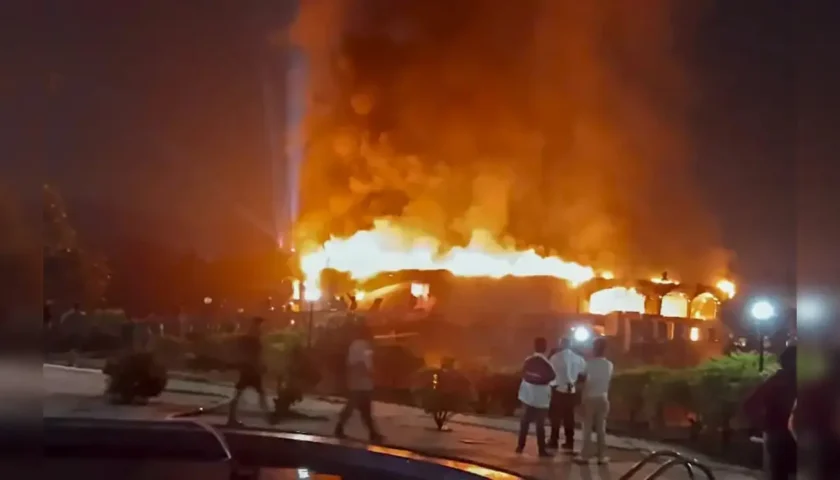At 8.55am, the goods train rammed into the back of the Kanchanjunga Express just before Rangapani town and around 10km away from New Jalpaiguri station.
A combination of a signalling fault on the tracks before the New Jalpaiguri station and human error by the driver of the freight train are likely to have led to a deadly collision in West Bengal that killed nine people and injured dozens, said railway officials, adding that the commissioner of railway safety (CRS) has launched a probe into the accident. “The actual cause of the accident will be clear after the CRS report,” railway minister Ashwini Vaishnaw said after an inspection at the spot around 4pm.
Railway Board chairperson Jaya Varma Sinha confirmed that human error may have played a role in the crash, the worst train accident in India since the Balasore accident in June last year that killed 296 people. “Prima facie, it appears to be human error but we will know more after the inquiry… let me assure you that safety is our priority,” said Sinha.
The nine people killed include the driver of the goods train as well as the guard and seven passengers of the Kanchanjunga Express, which was headed from Sabroom in Tripura to Kolkata in West Bengal., carrying 1,300 people. “Unfortunately, the driver (of the cargo train) also perished in the accident…. Whatever we can gather from the situation, it seems there was a disregard for the signal,” she said.
At 8.55am, the goods train rammed into the back of the Kanchanjunga Express just before Rangapani town and around 10km away from New Jalpaiguri station.
According to internal documents seen by HT, the automatic signalling system between Ranipatra railway station and Chattar Hat junction in West Bengal, XX stations before New Jalpaiguri, was not working since 5.50am on Monday, prompting the New Jalpaiguri station master (CHECK) to issue a cautionary note known as “T/A912” to all drivers passing through the section.
CAN WE GET SOMETHING ON WHY THE SIGNALLING SYSTEM WAS NOT WORKING+WHY THIS IS A REPETITIVE PROBLEM ON INDIAN TRACKS
The T/A912 authorisation allows pilots to skip red lights on affected sections, subject to some key clauses. One of these stipulates that pilots must drive at speeds below 15km/hr if conditions are clear, and below 10km/hr in the event of rain (as it was on the section on Monday morning).
Another says all train drivers passing through the section must wait before every signal for a minute during day time and for two minutes during nights. The driver of the freight train appears to have been operating at a speed much higher than the capped 10km/hr threshold, said officials. It is unclear why at this point.
However, the Kanchanjunga Express – its driver had also been issued a TA/912 authorisation – was likely travelling below the 10km/hr limit, said officials. A Northeastern Frontier Railway (NFR) official said, “Before the accident, trains like the 15909 Avadh Assam Express and 15710 New Jalpaiguri-Malda Town Intercity Express also passed the section, following the existing protocols of halting at red signals and moving with caution. It seems that the loco pilot of the goods train did not follow the rule.”
The three-train crash in Balasore, Odisha last year, which killed nearly 300 people, was triggered by a combination of a signalling error and a failure of the electronic interlocking system – an automated mechanism that ensures trains do not come in each others’ way.
Vaishnaw, after visiting the site in the afternoon, said, “Right now our focus is on restoration. This is the main line. The rescue operation has been completed. This is not the time for politics. I will also meet the injured.”
Still, a guard van and two parcel vans that housed the tail-end of the Kanchanjunga Express absorbed much of the impact during the crash and dissipated the damage away. As a result, only one passenger coach was derailed on impact.
Sabyasachi De, spokesperson of the Northeast Frontier Railway said that five wagons of the cargo train carrying containers also derailed. Source




